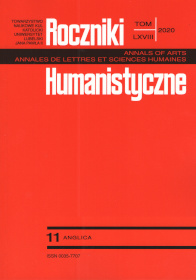Foreign-Space Dramatization in Graham Greene’s The Power and the Glory: Revisiting Greeneland
Foreign-Space Dramatization in Graham Greene’s The Power and the Glory: Revisiting Greeneland
Author(s): Beatriz ValverdeSubject(s): Language and Literature Studies, Studies of Literature, British Literature
Published by: Towarzystwo Naukowe KUL & Katolicki Uniwersytet Lubelski Jana Pawła II
Keywords: Greene; Rulfo; The Power and the Glory; Pedro Páramo; Greeneland
Summary/Abstract: Graham Greene was a frequent traveler and he commonly chose different spaces around the world as settings for his novels. Critics have generally agreed, however, that the British author created in his novels an a-topos, a space that conformed not to the reality of the country depicted, but to the development of the topics, spiritual or political, with which Greene was obsessed. That atopical location became over time what has been called Greeneland, a concept with which any Greene scholar inevitably becomes familiar. In this paper, I revisit the concept of Greeneland, arguing that scholars tend to focus on the major themes present in Greene’s literary world and to ignore the fact that a close analysis of the fictional landscape in his work challenges the assertion that what Greene created in his novels was a mental entity, a non-place. In order to do so, I focus on the representation of space and society in Greene’s The Power and the Glory (1940), the Mexico of the religious persecution of the late 1920s. I compare Greene’s representation with the Mexico of the same period depicted in Juan Rulfo’s Pedro Páramo (1955), a novel whose fictional landscape bears uncanny resemblances to the one described in The Power and the Glory. This analysis leads us to rethink the concept of Greeneland as generally defined in the criticism.
Journal: Roczniki Humanistyczne
- Issue Year: 68/2020
- Issue No: 11
- Page Range: 225-234
- Page Count: 10
- Language: English

